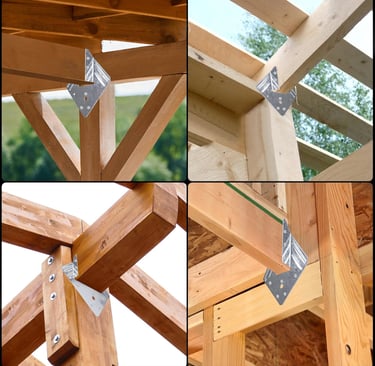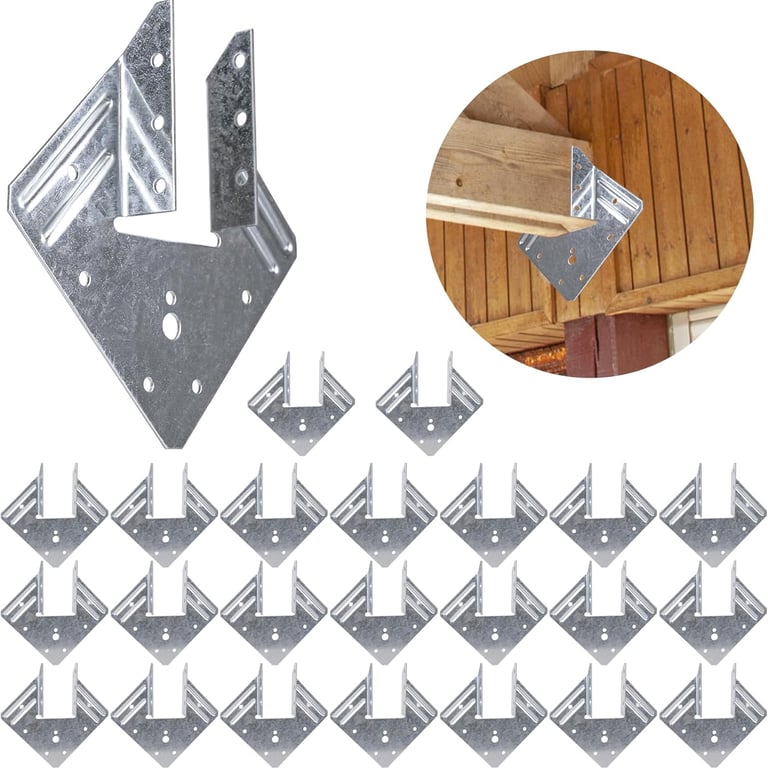"Hurricane Straps Guide: Secure Your Roof & Prevent Wind Damage | Expert Tips"
"Learn how hurricane straps protect homes from storm damage. Discover installation steps, product comparisons, and expert advice to reinforce your roof’s safety."
Introduction
Living in an area prone to hurricanes can be both beautiful and challenging. While the scenic views and coastal breezes are undeniably appealing, the threat of hurricanes looms large. One of the most effective ways to protect your home from the devastating effects of hurricanes is by installing hurricane straps.
What are Hurricane Straps?
Hurricane straps, also known as hurricane strapping or hurricane ties, are metal connectors designed to strengthen the connection between the roof and the walls of a building. They are typically made of galvanized steel and are installed at key points along the roofline to provide additional resistance against strong winds and uplift forces.
The Importance of Hurricane Straps
During a hurricane, the strong winds can exert tremendous pressure on a building's roof, causing it to lift or separate from the walls. This can lead to catastrophic damage, including roof failure and the collapse of the entire structure. Hurricane straps play a crucial role in preventing such damage by anchoring the roof securely to the walls, ensuring structural integrity and reducing the risk of collapse.
Additionally, hurricane straps also help distribute the forces generated by high winds more evenly across the entire roof, minimizing localized stress points and reducing the likelihood of damage to individual roof components.
How to Install Hurricane Straps on an Existing Roof
While it is ideal to install hurricane straps during the construction phase of a new building, it is still possible to retrofit them onto an existing roof. Here is a step-by-step guide on how to install hurricane straps on an existing roof:
1. Assess Your Roof
Before starting the installation process, carefully inspect your roof to identify the key areas where hurricane straps should be installed. These areas typically include the corners of the roof, the ridge line, and any other points where the roof connects to the walls.
2. Gather the Necessary Tools and Materials
To install hurricane straps, you will need the following tools and materials:
Hammer
Nails or screws
Galvanized hurricane straps
Measuring tape
Safety goggles
Gloves
3. Secure the Hurricane Straps
Start by securing the hurricane straps to the roof trusses or rafters. Place the straps over the top of the trusses, ensuring that they are centered and aligned with the truss or rafter. Use nails or screws to attach the straps securely to the trusses.
4. Attach the Hurricane Straps to the Walls
Once the straps are secured to the roof trusses, extend them down the walls of the building. Position the straps so that they are centered and aligned with the wall studs. Use nails or screws to attach the straps securely to the walls.
5. Repeat the Process
Continue installing hurricane straps at regular intervals along the roofline, making sure to maintain proper alignment and spacing. Repeat the process for each corner of the roof, the ridge line, and any other areas where the roof connects to the walls.
6. Seek Professional Help if Needed
If you are unsure about the installation process or if your roof has complex features, it is recommended to seek professional help. A licensed contractor or roofing specialist will have the expertise and experience to ensure the proper installation of hurricane straps.
RV Hurricane Strap Kits
In addition to protecting homes, hurricane straps can also be used to secure recreational vehicles (RVs) during severe weather conditions. RV hurricane strap kits are specifically designed to secure RVs to the ground, preventing them from being overturned or damaged by strong winds. These kits typically include straps, stakes, and other necessary hardware for installation.
Conclusion
Installing hurricane straps is a proactive and effective measure to protect your home or RV from the destructive forces of hurricanes. By strengthening the connection between the roof and the walls, hurricane straps significantly reduce the risk of roof failure and structural collapse. Whether you are retrofitting an existing roof or securing an RV, following the proper installation process is crucial to ensure the straps provide the intended protection. Remember, if you are unsure about the installation process, it is always best to consult with a professional for guidance.







